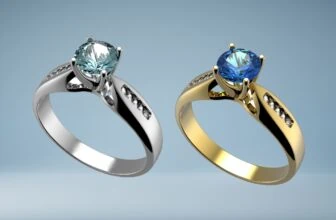
Table of Contents
Cubic zirconia, often dubbed the “doppelgänger of diamonds,” has long been the go-to gemstone for those looking for that diamond sparkle without the diamond price tag. But how much do we really know about this stone?
If you’re thinking of adding cubic zirconia to your gem collection, here’s everything you need to know about it.

Let me just add here that cubic zirconia should not be mistaken for zircon. Zircon, which is also a diamond look-alike, is much softer (6.5 – 7.7 on the Mohs scale) and one of the oldest natural gemstones (some zircon crystals are estimated to be over 4 billion years old!).
So going back to cubic zirconia.
Although natural CZ had been discovered in the 1930s, it wasn’t until the 1970s that the process of creating synthetic CZ was perfected, with commercial production starting in 1976. While the initial aim was to use the stone for various industrial applications, it quickly became clear that CZ had great jewelry potential. It was durable (Mohs ranking of 8.0 to 8.5) and was a perfect imitation of diamonds.
It’s estimated that by the early 80s, over 50 million carats of CZ were produced globally per annum for use in jewelry.
When famous jewelry brands such as Swarovski began to use CZ in their designs, it was clear that CZ had officially arrived. It became a staple in the jewelry world and the most popular diamond simulant to date.
How Is Cubic Zirconia Made?
Cubic zirconia is created in a tightly controlled environment, following a ‘recipe’. The main ingredients are zirconium oxide along with other minerals such as calcium oxide.
Manufacturers can create colored CZ by adding various elements during the process. For example, chromium creates green CZ, titanium golden brown, and cerium in varying amounts turning the final product into yellow, orange, or red. Because natural CZ is so rare, all the CZ stones used on the market are lab-created.
How to Evaluate Cubic Zirconia Using the 4Cs

1. Cubic Zirconia Clarity
Most CZ is flawless with very high clarity and has no inclusions in its crystals, although in some cases there can be cloudiness. Just look for a clear stone when buying.
2. Cubic Zirconia Color
In terms of color, cubic zirconia is usually colorless and has the D grading of a diamond. If you know diamonds, then you will know that a D color grade means totally colorless (and therefore more valuable).
You can find colored CZ in a range of colors. Pink CZ, also called Pink Ice, has been very popular in the market. There are also green, blue, yellow, and lavender among others.
3. Cubic Zirconia Cut
CZ can be cut into a variety of different shapes and share the same popular cut shapes as diamonds, including brilliant round, princess, heart, cushion, pear, and marquise.
When cutting the CZ, the aim is to maximize the beauty of the stone, bringing out its brilliance and fire to the best effect.
4. Cubic Zirconia Carat
CZ is measured in carats just like diamonds. Unlike diamonds, the price of a CZ does not increase exponentially with the increase in carat weight. Also, because a CZ is denser than a diamond, it is much heavier. So a diamond and a CZ of the same carat weight will not be of the same size, with the CZ being smaller.
When shopping for CZ, ensure that you shop at a vendor that has a good returns policy just in case you aren’t quite satisfied with your purchase
Is Cubic Zirconia Fake?
When people ask this question, it’s because they’re comparing cubic zirconia to a diamond. CZ isn’t a diamond, but because it’s a diamond simulant, cut and marketed to imitate a diamond, you could call it a ‘fake’ diamond.

However, it’s a real stone in its own right. Just because it looks like a diamond but isn’t one, doesn’t mean it is a fake stone. However, don’t confuse a CZ with a synthetic diamond. That’s a totally different thing.
A synthetic, or lab-created diamond, is a man-made stone that has the same chemical, structural and optical properties as a mined diamond. It is a real diamond, only lab-created. A CZ, on the other hand, only looks like a diamond and that’s where the resemblance ends. In every other way that matters, a CZ is different from diamonds.
Cubic Zirconia vs. Moissanite

Moissanite is another diamond simulant and cubic zirconia’s number 1 competitor. Made of silicon carbonate, it too is grown in labs, as natural moissanite is very scarce.
While moissanite has been increasing in popularity, it is a much more expensive stone than cubic zirconia. It also has a higher hardness rating (Mohs 9.5) than CZ and higher brilliance than a diamond (RI 2.65).
It is an excellent alternative to a diamond and if you don’t mind spending a bit more, then we recommend moissanite over CZ.
Cubic Zirconia vs. Diamond
Right, so the all-important question that we’ve been waiting for. How does a CZ compare to a diamond?
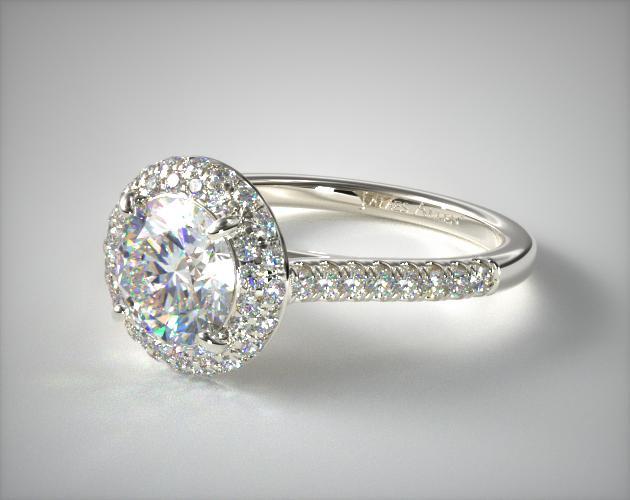
A diamond, it goes without saying, is extremely durable, with a Mohs hardness ranking of 10, and does not easily scratch, tarnish, or chip. A cubic zirconia is not as durable (8.0 – 8.5 on the Mohs scale) and can get cloudy, scratched, and damaged over time. It needs to be cleaned much more often than a diamond.
A CZ is colorless and almost always flawless. A diamond, on the other hand, can be found with varying tints of yellow and almost always contains flaws. A flawless colorless diamond is rare and therefore very expensive.
The main visual difference between these two stones is the fire of a CZ. A diamond’s fire is much more subdued while a CZ sparkles in a variety of colors! This is off-putting for some customers as they find this flash of colors too much.

Another difference is that while CZ is a brilliant stone, it doesn’t have the same depth of brilliance that a diamond has.
So what’s the bottom line? CZ is it’s affordability and environmentally friendliness. While cubic zirconia cannot beat the brilliance and durability of a diamond, it’s a good simulant and if well taken care of, can be a good substitute.
Should I choose a Cubic Zirconia for My Engagement Ring?
An engagement ring is a highly important, emotional piece of jewelry. Most girls don’t talk about, say their promise rings or wedding rings, but they do show off their engagement rings.
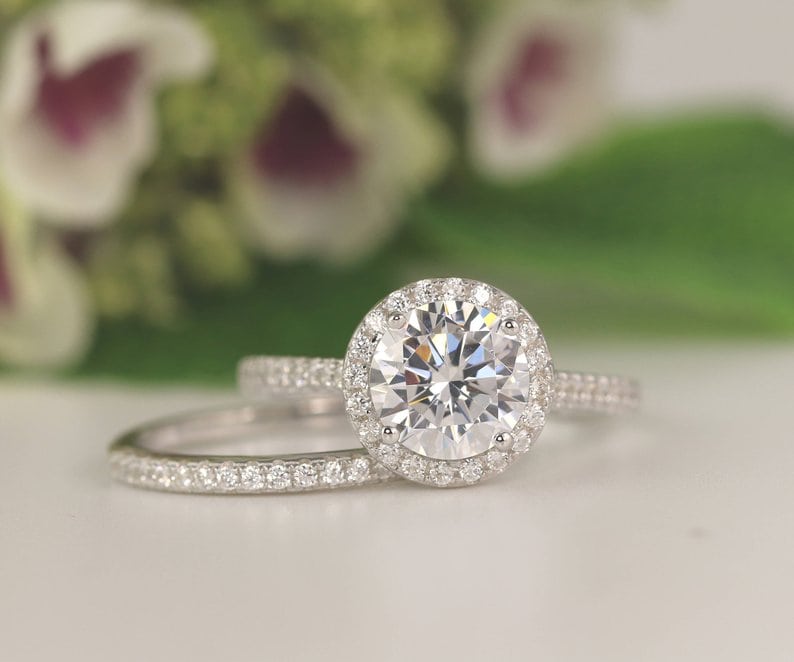
Because diamonds have been the go-to stone for engagement rings for many decades now thanks to clever marketing tactics and false scarcity, most people will not consider any other stone apart from a diamond.
It is, for them, the epitome of class, wealth, and the symbol of their love. It’s valued because it’s expensive. So buying something other than a diamond comes with the fear of being judged for it – you could be seen as being too cheap or not valuing your loved one enough to lavish your money on a stone for them.
So really, the answer to whether or not you should buy a CZ for your engagement ring will depend on how you and your partner perceive this purchase.
In practical terms, a CZ has the look of a diamond without the exorbitant cost. But it may lose its luster and sparkle eventually and will not last as long as a diamond engagement ring.
It’s recommended that you approach your partner about this and both discuss and both agree if you do decide to go with a CZ. This isn’t a decision that should be taken alone. As I said before, it depends on what you both value. If your partner has been dreaming of a particular stone and receives a CZ that would be awkward. For both of you!
Cubic Zirconia Engagement Rings
Just because a CZ is very affordable does not mean that you have to compromise on quality. When purchasing a CZ engagement ring here are a couple of things to check for:
1. Choosing the Setting

Ensure that the setting of the ring is of high quality. Many people feel that because the stone isn’t worth much, the setting shouldn’t cost much either.
But think of it this way:
If you purchase a high-quality metal such as gold or platinum, it will not damage, discolor or lose shape easily. Also, it will add value to the stone and lengthen the life of the ring, making it suitable for regular use.
Both sterling silver and stainless steel are affordable and durable choices. Sterling silver is not as durable as stainless steel and can easily become worn and thin. If you choose a stainless steel ring, bear in mind that although it is a strong metal, it shouldn’t come into contact with chlorinated water.
Also, consider whether the CZ stone has been set securely in its metal setting. Ensure that the stone isn’t moving or that the prongs aren’t loose. This is important if you’re going to wear this piece of jewelry daily.
2. The Size of the Stone

Another factor to remember when purchasing a CZ engagement ring is that larger CZ stones can look fake and have a stronger ‘rainbow effect’. As I mentioned before, while some shoppers don’t mind the rainbow effect, others find it makes the stone look cheap. If you want a large flashy stone, you might be better off with a moissanite or a synthetic diamond. Also consider the 4cs of the stone, which we have already discussed.
3. CZ Quality Grades

Cubic zirconia is sometimes graded into the following categories: A, AAA, and AAAAA. Accordingly, grade A is of the lowest quality and is easily damaged, chipped, and tarnished, 3A are mid-range stones and 5A are of the highest quality with little difference in appearance to diamonds. 5A is also marketed as being hand-cut and polished and therefore, the very best of CZ.
However, there is no industry standard to grade CZ stones. Neither is there a certifying body that will appraise the grade of the CZ. Oftentimes, there is no distinguishable difference between an A and a 5A CZ stone.
Rather than worry about the grade of your CZ, it’s better to focus on the appearance of the stone and the quality of the setting.
What is CZ Refractive Index?

The refractive index (RI) is a measure of how much a substance can bend or refract light that passes through it. This plays a significant role in determining the brilliance or sparkle of a gemstone. Cubic zirconia has a refractive index of approximately 2.15 to 2.18.
Comparison with Diamond
In comparison, diamond has a refractive index of about 2.42. The RI of a diamond is one of the primary reasons for its exceptional brilliance. While CZ’s RI is lower than that of a diamond, it’s still quite high when compared to many other gemstones. This high refractive index gives CZ its sparkly appearance and is one of the reasons it’s a popular diamond substitute.
Dispersion
Another property related to the interaction of light with gemstones is dispersion, which refers to the gem’s ability to split white light into its constituent colors, producing a “fire” or rainbow-like effect. CZ has a slightly higher dispersion than diamond.
This means that, under certain lighting conditions, a CZ might exhibit more colorful flashes than a diamond. However, the difference is subtle and can sometimes make a CZ appear slightly “overly sparkly” to the trained eye.
Significance
The refractive index and dispersion are essential properties to consider when comparing the visual characteristics of gemstones. While cubic zirconia has a lower RI than diamonds, making it slightly less brilliant, its higher dispersion can sometimes compensate by giving it a fiery appearance.
In conclusion, while CZ doesn’t exactly match the brilliance of diamonds due to its slightly lower refractive index, it still possesses a notable sparkle and fire, making it a convincing and affordable alternative for many jewelry applications.
Choosing Cubic Zirconia Jewelry
Because of its sparkle and diamond-like appearance, CZ is a classic stone that goes well with any outfit.

CZ rings, especially engagement rings, are on the rise. Many couples choose them as stand-ins until they get diamonds or as permanent, ethical options.

CZ is also found in fashion rings, from statement pieces to minimalist bands. CZ earrings, like studs, drop earrings, and hoops, are common and versatile. CZ is used in necklaces and pendants, from basic to elaborate designs. Modern chokers also incorporate CZ.

CZ is present in bracelets, including tennis, cuff, and charm styles. Vintage jewelry like brooches and pins now include CZ. CZ anklets are gaining popularity, and brides often choose CZ jewelry sets.
How to Clean Cubic Zirconia
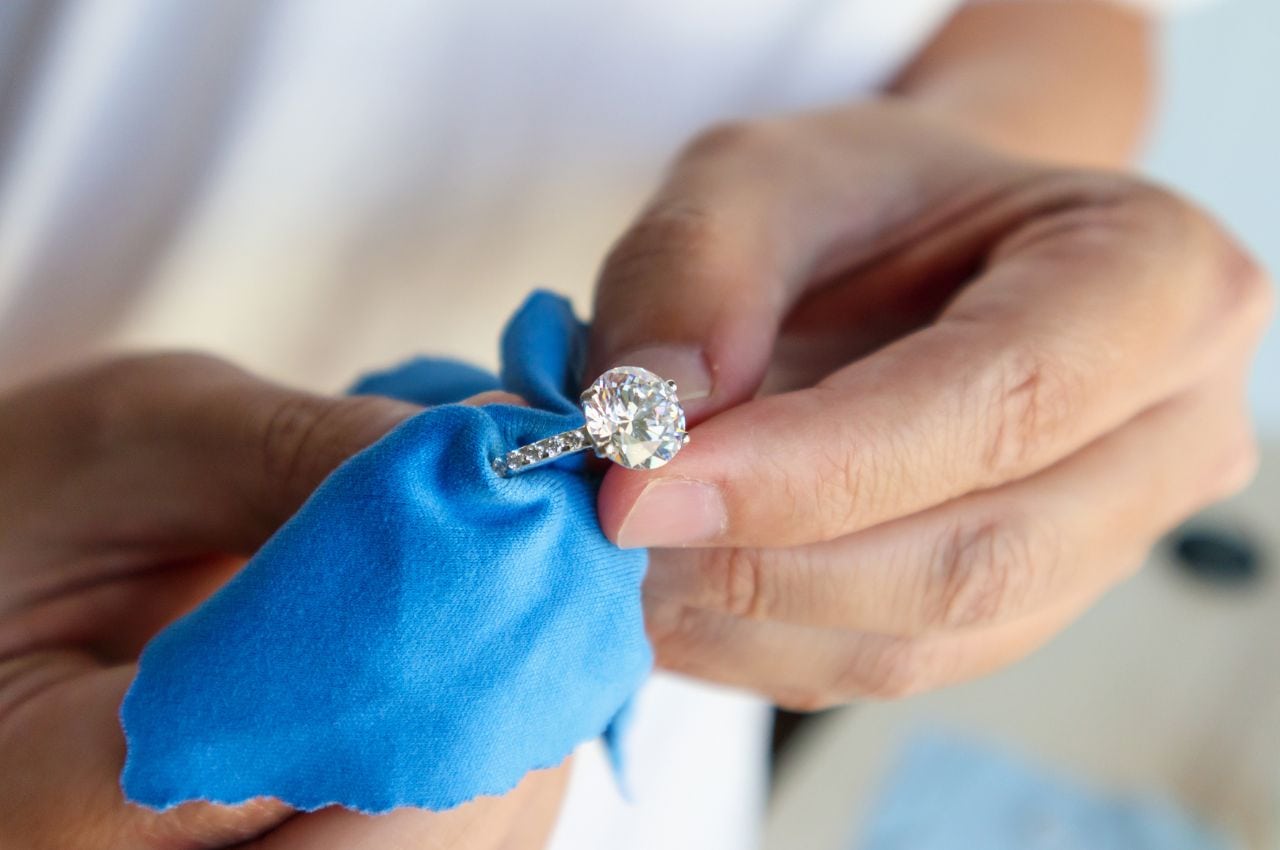
Unlike diamonds or moissanite, CZ is more prone to getting dirty and cloudy. As a result, it needs to be cleaned more frequently and taken care of.
- It’s best not to wear your CZ when doing activities that can damage it, such as outdoor activities. This can scratch the stone.
- Do not allow the CZ to come into contact with chemicals, such as detergents, soaps, hairspray, or cosmetics. Take care when swimming, cleaning, or even applying body lotion. These can cause the stone to become dull over time and can cause damage to the stone.
- When cleaning your CZ, make sure you use a soft cloth or brush and warm soapy water to gently wash away the dirt. This will get rid of the various residue on the stone and bring out its sparkle. For best results, try to clean your stone at least once or twice a month to ensure its brilliance isn’t diminished.
- Try to have your stone professionally cleaned by a jeweler as required. If the stone is too cloudy and cannot be cleaned, you can have the jeweler replace the CZ in your jewelry with a new one.
Where to Buy Cubic Zirconia?
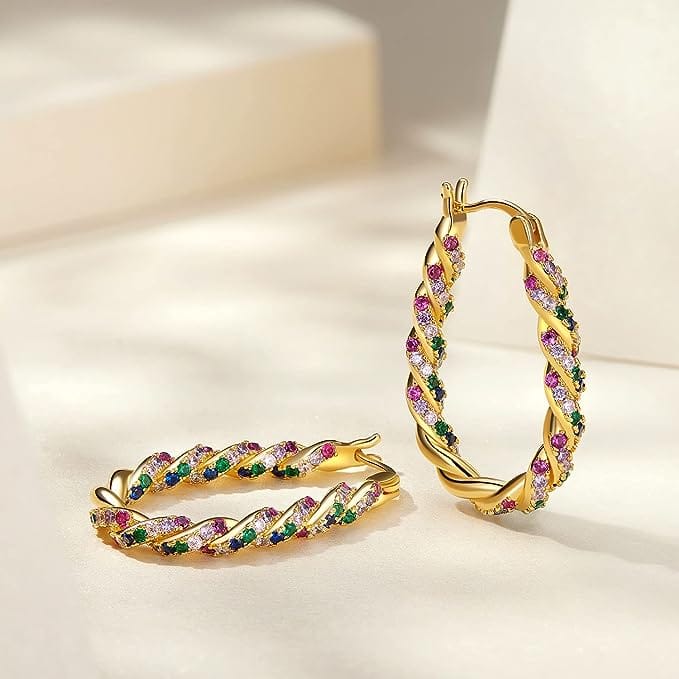
When buying cubic zirconia, take care because you may be told by sales representatives that what they’re selling isn’t cubic zirconia but instead is ‘zirconium oxide’. Don’t be fooled by this because cubic zirconia is the crystalline form of zirconium oxide. In other words, they’re the same thing. So you shouldn’t be made to pay more for a different name. Here are some top sellers to consider for your tanzanite or blue sapphire purchases.
- Etsy: Etsy is an online platform where retailers can offer their products. You’ll find everything from authentic vintage jewelry to inexpensive costume pieces.
- Amazon: Given its enormous vendor network, Amazon ensures cubic zirconia choices for every budget range. However, it’s wise to thoroughly examine seller feedback and ratings prior to any acquisition.
History of Cubic Zirconia

Cubic zirconia (CZ) is a synthetic gemstone, which means it’s man-made and not naturally occurring like a diamond. Its origins can be traced back to the lab, and its history is rooted in scientific endeavors rather than geological formations.
Cubic zirconia is made from zirconium dioxide, a crystalline form of zirconium oxide. Zirconium itself was discovered in 1789 by the German chemist Martin Heinrich Klaproth, but the process of creating cubic zirconia in a lab wasn’t developed until much later.
The first commercially viable production of cubic zirconia was achieved in the 1970s. Soviet scientists developed the method, which involves melting powdered zirconium and zirconium dioxide together and heating them to an incredibly high temperature, resulting in crystals that can then be cut into gemstones. The process is called the skull crucible method or the skull melt method.
After its successful creation in the lab, cubic zirconia quickly rose in popularity as a diamond simulant. It was introduced to the jewelry market in 1976 as a more affordable alternative to diamonds. Since then, its demand has continued to grow because of its affordability, close resemblance to diamonds, and versatility in jewelry-making.
While cubic zirconia doesn’t have the natural origin or long geological history of diamonds, its creation is a testament to human ingenuity and the advancements in crystal growth technology.
Wrapping Up
In the expansive universe of gemstones, cubic zirconia has carved its niche as a dazzling and cost-effective alternative to diamonds. Though synthetic in origin, its brilliance, affordability, and versatility make it a sought-after choice for jewelry enthusiasts. Embracing cubic zirconia is a testament to modern innovation, proving once again that with the right elements and artistry, it’s possible to create something truly mesmerizing.



